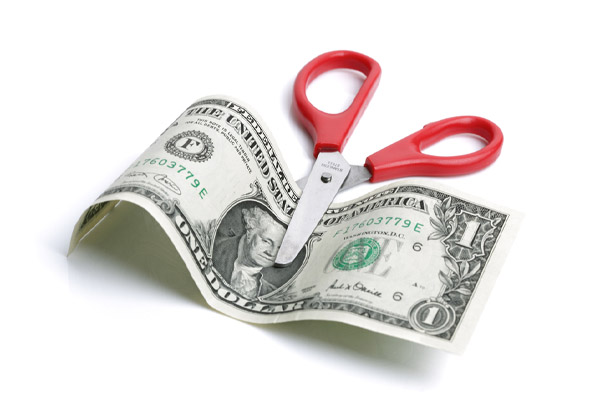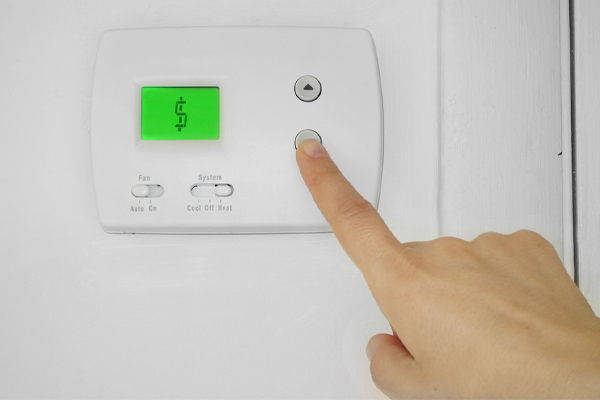HVAC thermostats are crucial in achieving energy efficiency in heating, ventilation, and air conditioning systems. These seemingly modest tools are instrumental in precisely regulating indoor temperature and play a significant role in energy management. Implementing a set back thermostat is an effortless yet powerful approach to enhance energy efficiency.
Set back thermostats yield notable economic and ecological gains by adjusting the temperature when spaces are unoccupied or during sleep hours. In this article, we will delve into the monetary and environmental benefits of adopting a thermostat setback strategy.
Understanding Thermostat Setback
Thermostat setback, also known as temperature setback, involves deliberately adjusting your thermostat to a lower setting (or higher when cooling) with the aim of saving energy. This adjustment is usually made when a building is not in use, or its occupants are sleeping.
Thermostat setback can be effectively implemented using a range of thermostat types, such as:
- Manual Thermostats: These necessitate the user to change the temperature settings manually.
- Programmable Thermostats: These enable users to preset temperature adjustments for specific times.
- Smart Thermostats: Equipped with advanced technology, these can adapt to your routine and offer the convenience of adjusting settings remotely through smartphone applications.
The principle behind thermostat setback is to lessen the demands on your heating or cooling system during periods when it’s less necessary. Take winter, for instance: you can program your thermostat to decrease the temperature while you’re away at work and then increase it just before you come back home. This strategy avoids the system operating at maximum capacity in the absence of occupants.
Employing a thermostat setback offers numerous advantages, such as diminished energy consumption, decreased utility expenses, and reduced carbon emissions. It is an energy-efficient method that balances maintaining comfort when necessary and conserving energy when it’s unnecessary. This approach aids in cost reduction and promotes environmental sustainability.
Energy Usage and Financial Benefits

Thermostat settings significantly affect your HVAC system’s energy use; higher settings in winter and lower in summer increase energy demands.
Adjusting your thermostat 7 to 10 degrees Fahrenheit for 8 hours daily can cut HVAC costs by up to 10%, depending on local weather, system efficiency, and setback duration.
Real-world examples show significant energy savings with thermostat setbacks. Lowering the thermostat during work or bedtime reduces heating costs, leading to lower utility bills and benefiting household budgets.
Thermostat setbacks not only save money but also offer environmental benefits by reducing energy production and associated carbon emissions, helping to lower your carbon footprint and promote sustainability.
Selecting an Appropriate Thermostat
When choosing a thermostat, you have several options. Manual thermostats allow setting a fixed temperature, whereas programmable thermostats let you set different temperatures for various times, aiding in energy efficiency. Smart thermostats further enhance this by learning your habits and allowing remote adjustments via smartphone apps.
Consider your daily routine, schedule, and specific heating or cooling needs when selecting a thermostat. Think about the flexibility you need in setting temperatures, as well as cost, ease of use, and compatibility with your HVAC system.
Thermostat installation varies; some are easy for DIY, while others require professional installation. Ensure compatibility with your HVAC system, and for smart thermostats, confirm Wi-Fi connectivity and app compatibility to utilize all features.
Optimizing Thermostat Settings

When implementing thermostat setbacks, balance energy savings with comfort. For heating, set the temperature slightly lower than your comfort level, and a bit higher for cooling. Avoid drastic temperature changes as they can reduce efficiency by taking longer to reach the desired temperature.
Align setbacks with your daily routine, lowering heating or increasing cooling when you’re away or asleep. Programmable and smart thermostats allow customization of your heating/cooling schedule with multiple time slots.
For best savings, be consistent with your setback routines, favoring gradual over sudden temperature changes. Regular HVAC maintenance enhances efficiency with these setbacks.
Contrary to popular belief, reheating or recooling a space after setbacks uses less energy than maintaining a constant temperature. Research and practical evidence show significant energy and cost savings with thermostat setbacks.
Keeping Track and Fine-Tuning
Regularly review your energy bills to assess the effectiveness of your thermostat setback settings. Look for patterns and, if necessary, tweak your settings for better efficiency. If you have a smart thermostat, it might offer detailed reports on energy usage.
It’s also essential to adapt your setback settings to the changing seasons. Consider setting your heating setback to a lower temperature during the colder months. Conversely, in the warmer months, raise the cooling setback temperature to align with the seasonal temperature variations.
Smart thermostats have remote control and monitoring capabilities, enabling you to modify settings via your smartphone. This feature offers convenience and provides valuable insights into your energy consumption. Such data can be instrumental in refining your setback strategy for maximum efficiency.
Should you face any challenges with your thermostat or its settings, the first step is to refer to the user manual for guidance. If the problem persists, reach out to the manufacturer for support. Common issues that users encounter include:
- Errors in programming the thermostat
- Difficulties with Wi-Fi connectivity
Energy-Efficient Heating & Cooling Tips

Consistent maintenance is key to guaranteeing the efficient operation of your HVAC system. Here are some fundamental steps to maintain system efficiency:
- Replace air filters at regular intervals.
- Keep ducts or vents clean.
- Arrange for yearly professional inspections of the system.
Ensure that any gaps around windows, doors, and other openings are effectively sealed. Adequate insulation in attics, walls, and floors assists in maintaining a stable indoor temperature.
Installing energy-efficient windows and doors minimizes heat transfer. This allows your HVAC system to expend less effort in maintaining comfort.
Ensuring proper airflow in your home is also crucial. Utilize ceiling fans to circulate air effectively. Additionally, you might want to consider a heat recovery ventilation system, which provides controlled ventilation.
When the time comes to replace your heating and cooling systems, investing in energy-efficient models is a wise decision. When choosing air conditioners and heat pumps, search for units with high SEER (Seasonal Energy Efficiency Ratio) ratings. For furnaces, prioritize those with high AFUE (Annual Fuel Utilization Efficiency) ratings. Selecting these energy-efficient options can lead to significant long-term energy and cost savings.
Potential Challenges and Solutions
When thermostat setbacks result in discomfort, consider fine-tuning the setback temperatures a little or integrating zoning systems. Use air purifiers and humidifiers to help maintain a healthy and comfortable indoor environment.
During extreme cold or heat, limit the extent of your temperature setbacks or employ a smart thermostat. These devices can adapt to changing weather conditions while optimizing energy efficiency.
Consult a professional technician if you encounter technical difficulties with your thermostat setback system. They have the expertise to diagnose and resolve any issues efficiently.
Adjust your setback temperatures gradually to achieve the right balance between comfort and energy savings. Ensure your HVAC system receives regular maintenance. Additionally, using the right appliances and ensuring proper insulation can help maintain a comfortable home.
Conclusion
Thermostat setback is a strategy replete with benefits, such as considerable cost reductions, a lower environmental footprint, and improved energy efficiency. By smartly managing your indoor temperatures, you can maintain home comfort while also playing a part in fostering a sustainable future. Maximizing the potential of this energy-saving approach involves seeking expert HVAC services for optimal thermostat settings. Embrace this opportunity now to enjoy immediate comfort and long-term financial and ecological advantages.
Tevis Energy’s sister company, Modern Comfort, performs HVAC installations, replacements, tune-ups, and more. Our technicians can provide you with expert HVAC services to ensure that your system provides you with the comfort and efficiency you deserve. Call now to schedule an appointment.
Contact Tevis Energy for Expert HVAC Services
Tevis Energy provides top-notch heating and cooling solutions in central Maryland and southern Pennsylvania. Our professionally certified technicians excel in delivering comprehensive HVAC services, including tune-ups, repairs, installations, and replacements. Each technician has extensive knowledge and experience, ensuring your HVAC system receives the best care.
At Tevis Energy, we pride ourselves on offering the most competitive prices for HVAC services. Our maintenance offerings are designed to enhance comfort, boost energy efficiency, and lower heating and cooling expenses. If you need HVAC repairs or considering a system replacement, our experts can guide you to the best option for your home, keeping your budget in mind. We stand behind our work with a satisfaction guarantee. For a service appointment or a free in-home estimate, call Tevis Energy today.
You can click here to contact us now or call us at (410) 876-6800 to find out more! Click the link to view our service area.

Related Articles:
